Your Step-By-Step Guide to Starting The Next Big Online Jewelry Store
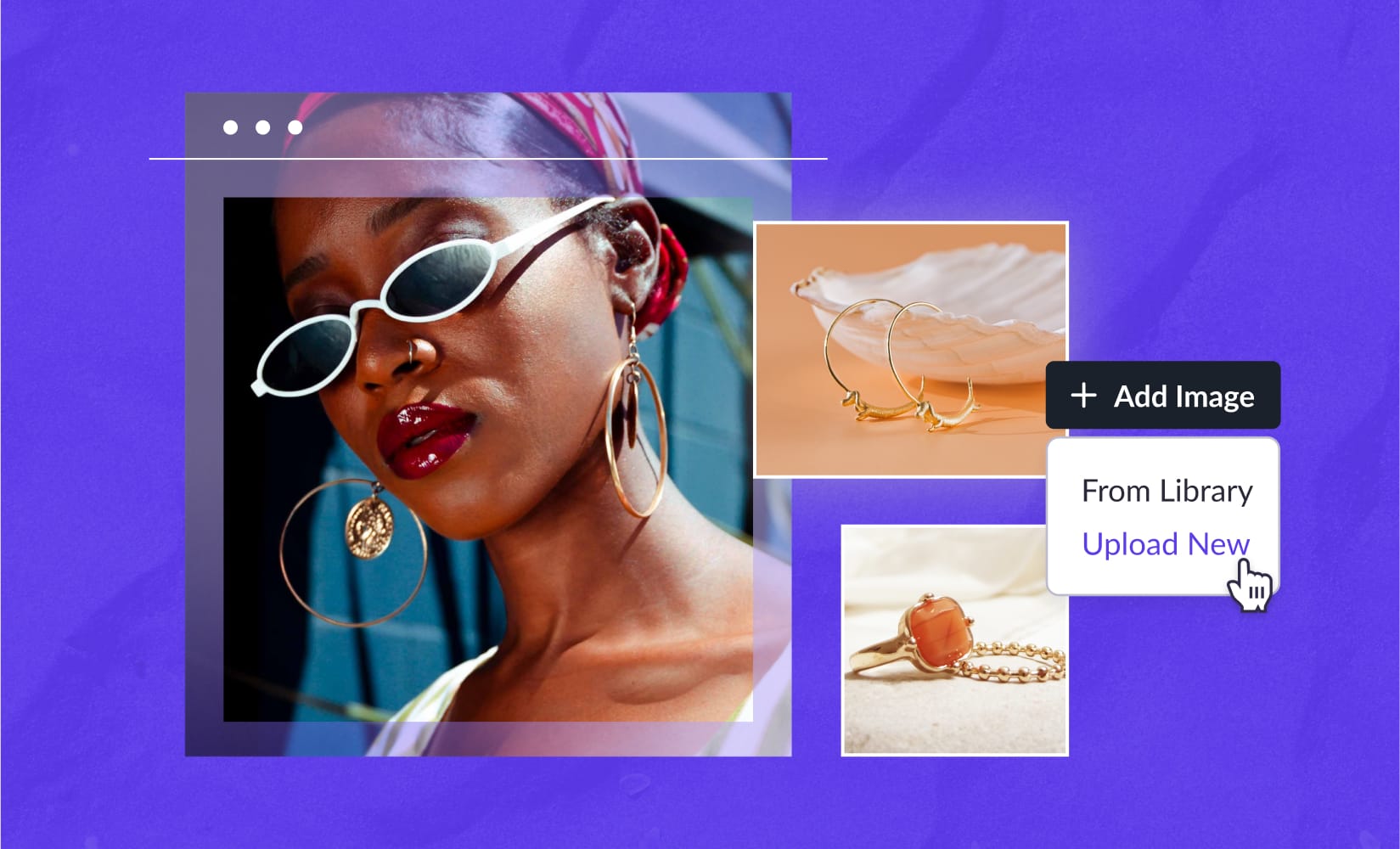
Humans have been decorating their bodies with things that shimmer and sparkle since the beginning. Once we realized that we could turn certain rocks into shiny baubles, we were all in.
So, it’s no wonder that jewelry is big business.
And there is a ton of money being spent on jewelry. By 2026, the value of the jewelry market is expected to hit 307 billion worldwide.
Although the online jewelry industry contracted due to the COVID-19 pandemic, it has started to recover as consumers feel confident to spend again.
In 2022, the online jewelry market went to $8.69 billion and is expected to stay around that level in 2023.
Given that people are so willing to trade their cash for earrings, necklaces, bracelets, and rings, starting a small jewelry business seems like a great notion.
You just need to know how to get started.
In this post, we’ll break down how to start a jewelry business in seven steps:
First, let’s talk about why you might want to start your own jewelry business.
#cta-visual-pb#<cta-title>Create your perfect jewelry store today<cta-title>Start building for free with Shogun Page Builder to assemble a fully custom revenue machine for your glamorous products.Start building for free
How to start your own jewelry business in 7 steps
As with any business, the desire to start one is the easy part. Putting this idea into motion takes a few big steps. But where there’s a will, there’s a way.
Luckily, it isn’t a huge lift to get your online jewelry business off the ground. Let’s go through it step by step.
1. Choose your ecommerce platform

Selling online comes with a whole host of big decisions. Not least is the platform or marketplace you choose to sell from.
While marketplaces come with a large existing audience for new brands, they have major constraints for growing brands.
Platforms, on the other hand, don’t come with an audience but are capable of accommodating your unique brand decisions.
To be in the right position for scaling your business, you want to start with an ecommerce platform that can grow with you. It isn’t fun to try to pivot when you’ve reached the ceiling of your chosen platform.
Here are a few of the major platforms you can choose from:
- Shopify. The most popular platform for ecommerce, starting a Shopify store is easy for first-timers and experts alike. Out of the box, it includes hosting, payments, shipping, checkout, marketing, and more. Plus, it has vast marketplaces for gorgeous themes and powerful apps.
- BigCommerce. Another powerful ecommerce platform that makes getting started super simple, BigCommerce has tons of built-in features to run your store, plus great additional options for themes and apps. Great for merchants with multiple stores and channels.
- Adobe Commerce (formerly Magento). This open-source platform is built to be highly customizable for larger sellers with developers or agencies. Unlike Shopify and BigCommerce, it doesn’t include hosting and requires more technical expertise.
- WooCommerce. Rounding out this list is another open-source (non-hosted) ecommerce platform from WordPress. With development help, merchants can make their stores look exactly how they want.
You can also go with a marketplace—like Amazon, Etsy, Walmart, or Facebook—but these are best as additional sales channels instead of your main storefront.
The benefit of having your own store is that you own your customer relationships and can use great email marketing to nurture those relationships.
Marketplaces can be a great source of extra revenue, though.
#cta-paragraph-pb#Need to level up your ecommerce knowledge? Take a look at our roundup of the top 26 ecommerce blogs to bookmark for online success.
2. Figure out your jewelry niche market
Jewelry is a big product category with all types of shoppers.
To succeed, you want to narrow in on one niche market so your marketing message and brand identity are clear and targeted.
Some jewelry niche markets to consider:
- Handmade jewelry. This is jewelry with a personal touch. Made by the seller, these pieces are unique and can be made to order. Given the work it takes to create each piece, these businesses are difficult to scale but can have a loyal customer base.
- Vintage jewelry. Instead of being made, these pieces are found and resold. The allure of this jewelry is its history, which can’t be replicated. Since this is second-hand reselling, growing the business is dependent on how many pieces can be sourced.
- Fine jewelry. The most widely advertised type of jewelry, fine jewelry, consists of new pieces made of precious metals and gemstones by highly skilled artisans. While fine jewelry is well-known, it isn’t a volume business because of the cost of each piece.
- Fashion jewelry. This type of jewelry (also known as costume jewelry) is meant to be worn daily and is more affordable for the regular consumer. The materials are less precious than that of fine jewelry, and manufacturing is done on a larger scale to reduce costs.
As you can see, the niche you choose will begin to outline how your business is run—from material sourcing and manufacturing to pricing and marketing.
Even within these niches, sub-niches help define your offering and decide the audience you will target with your marketing.
Do your research to find out what’s trending and what’s peaked.
Your marketing becomes more effective when you aren’t trying to market to everyone, which means better conversions and more sales.

With a clear idea of the type of jewelry you will sell, this would be a great time to build prototypes of what your pieces might actually look like. You can begin to sketch out collections that will define your brand.
For secondhand and vintage jewelry sellers, no prototyping is necessary.
Within your niche, you will have competition. It’s vital that you understand who you are competing with for sales so that you can create differentiation.
Figure out what they do well, their weaknesses, the social media they use, where their ads show up, and more to build a winning strategy to woo their customers to your side.
As you start to nail down these specific details about your brand, you’ll be able to start putting together a clear business plan.
This will clear the way for you to register your business, making your whole experience that much more real.
#cta-visual-pb-wbpd#<cta-title>Take a peek into the top trending products<cta-title>Get access to our original research report featuring recommendations for store growth.Download the report
3. Source your materials and find manufacturers
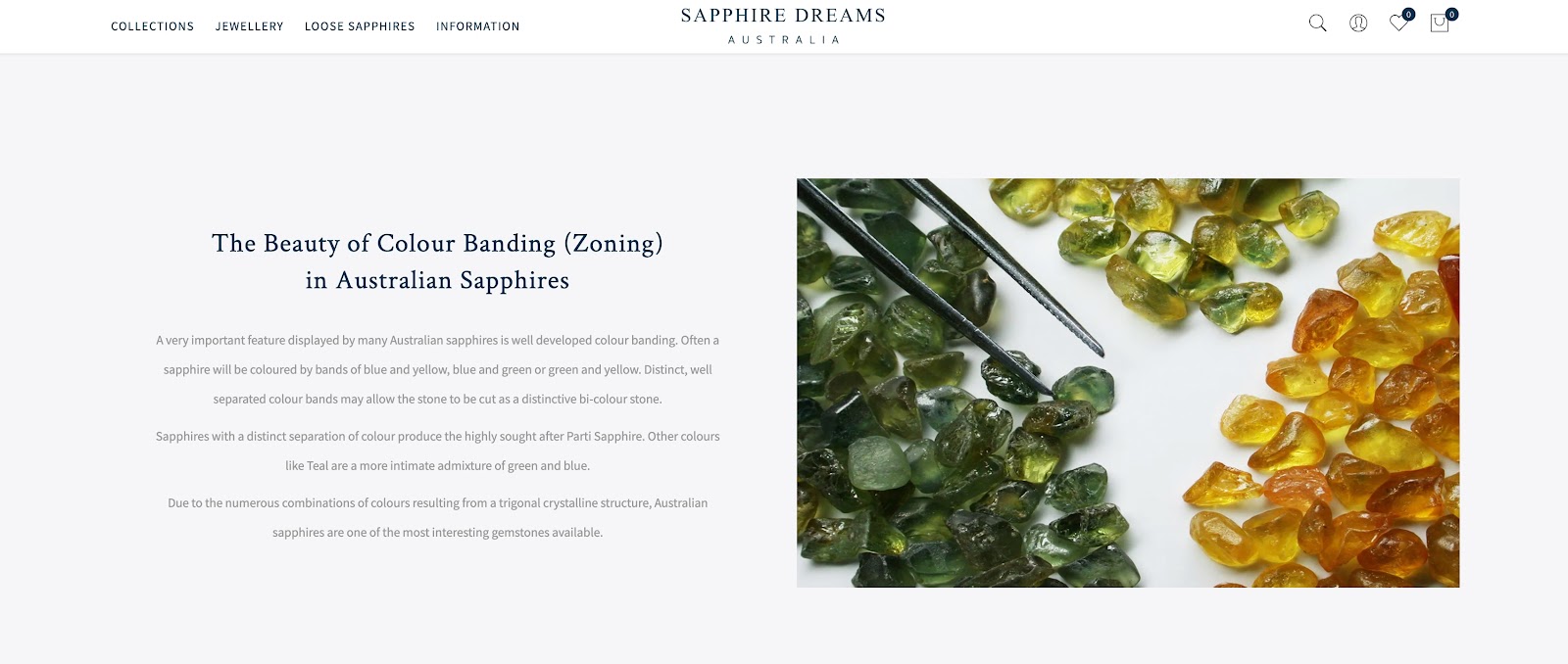
Once you’ve fleshed out your niche and developed a clear idea of what you will be selling, you can start thinking about sourcing your materials and deciding how your jewelry will be made.
By finding an awesome wholesale supplier, you can source loose diamonds, gemstones, and metal jewelry ready for setting with your own gems.
You can even find these materials through marketplaces like eBay, Etsy, and Amazon.
If you won’t be making jewelry to sell yourself or if you will be switching from in-house to outsourced, you can also find jewelry manufacturers through these same wholesale sites.
If you like a particular supplier’s jewelry, you can start a relationship with them to produce your pieces.
That way, you can still create a unique product line while scaling up efficiently.
Sourcing your materials and starting a contract with a manufacturer might be costly, so you can look into obtaining initial funding to get your jewelry store off the ground.
Shopify merchants, if eligible, can get fast small business funding through Shopify Capital. Eligible stores will get notified by Shopify directly.
There are plenty of funding alternatives, as well. So, getting your inventory readied is more than attainable.
4. Create a brand identity and style
Having gotten many of the foundational elements in place, you can start in on the fun stuff—branding.
Branding may well be what sets you apart from your competitors.
The important thing about branding is that it is consistent. From page to page and image to image, you want your shoppers to know it is you, even without seeing your logo.
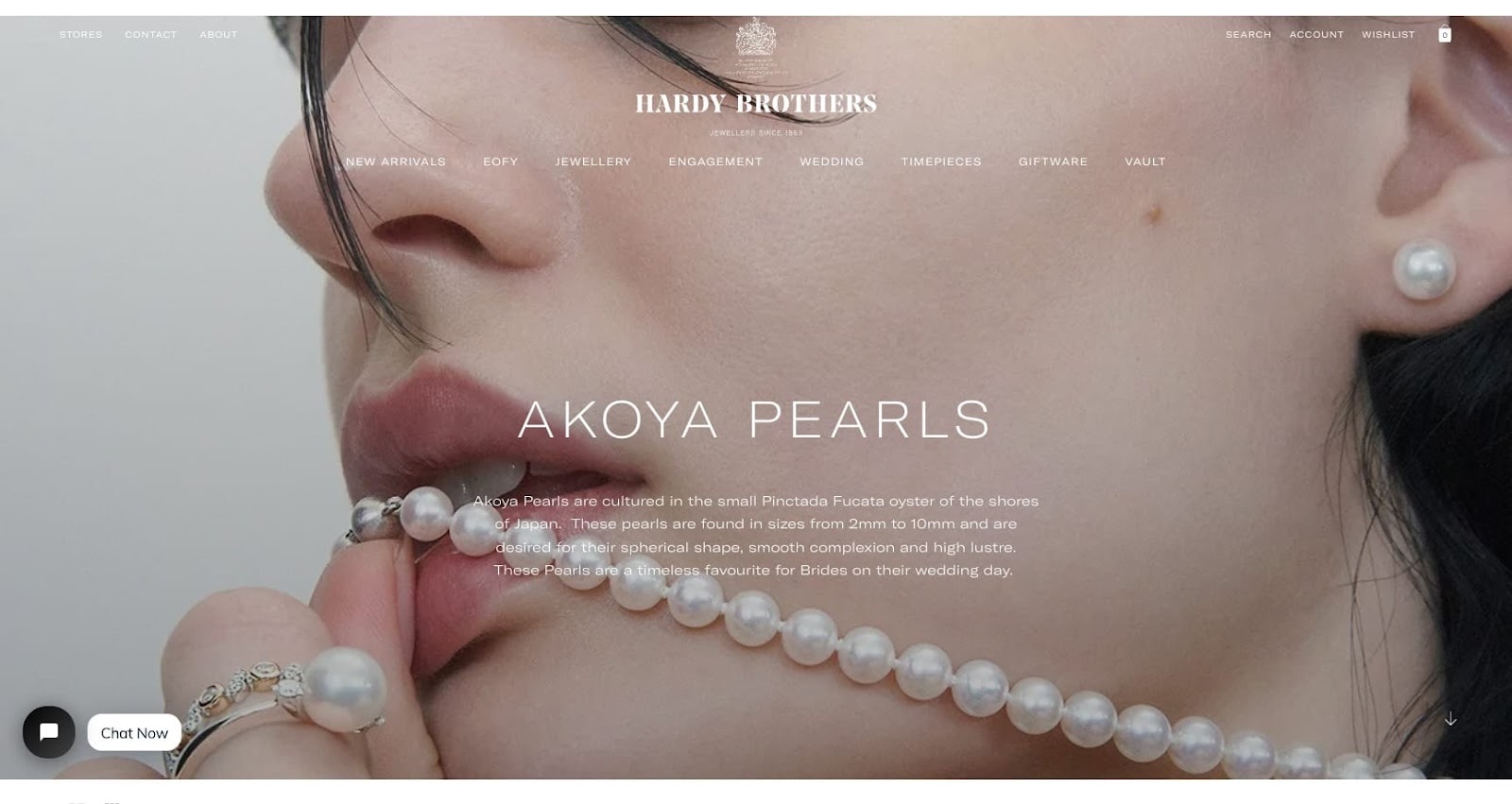
There are a few major things that go into building your brand identity:
- A name they won’t soon forget. Brand names either have staying power or they don’t. Pick a name that represents your brand while being hard to forget.
- Evocative colors. The color palette you choose will define your brand and evoke certain emotions in your customers. Use color psychology to find the perfect match for your brand.
- A great mission and vision. Your customers are buying into your brand story just as much as they are buying your products. If your mission and vision align with your audience, they will have a deeper connection to your brand.
- A simple yet memorable logo. The symbol of your brand, your logo helps define what you are about and can enable brand awareness in a simple way.
- A signature style of photography. Product photography isn’t just images of what you sell. It is a statement about what your products are all about, with a personality all their own. Use a consistent and stunning style to showcase your jewelry in studio and lifestyle shots.
Some of the best brand names come from great stories.
Two brands we know well—Copper Cow and Hippy Feet—both came to their names in interesting ways (read their linked stories to find out more).
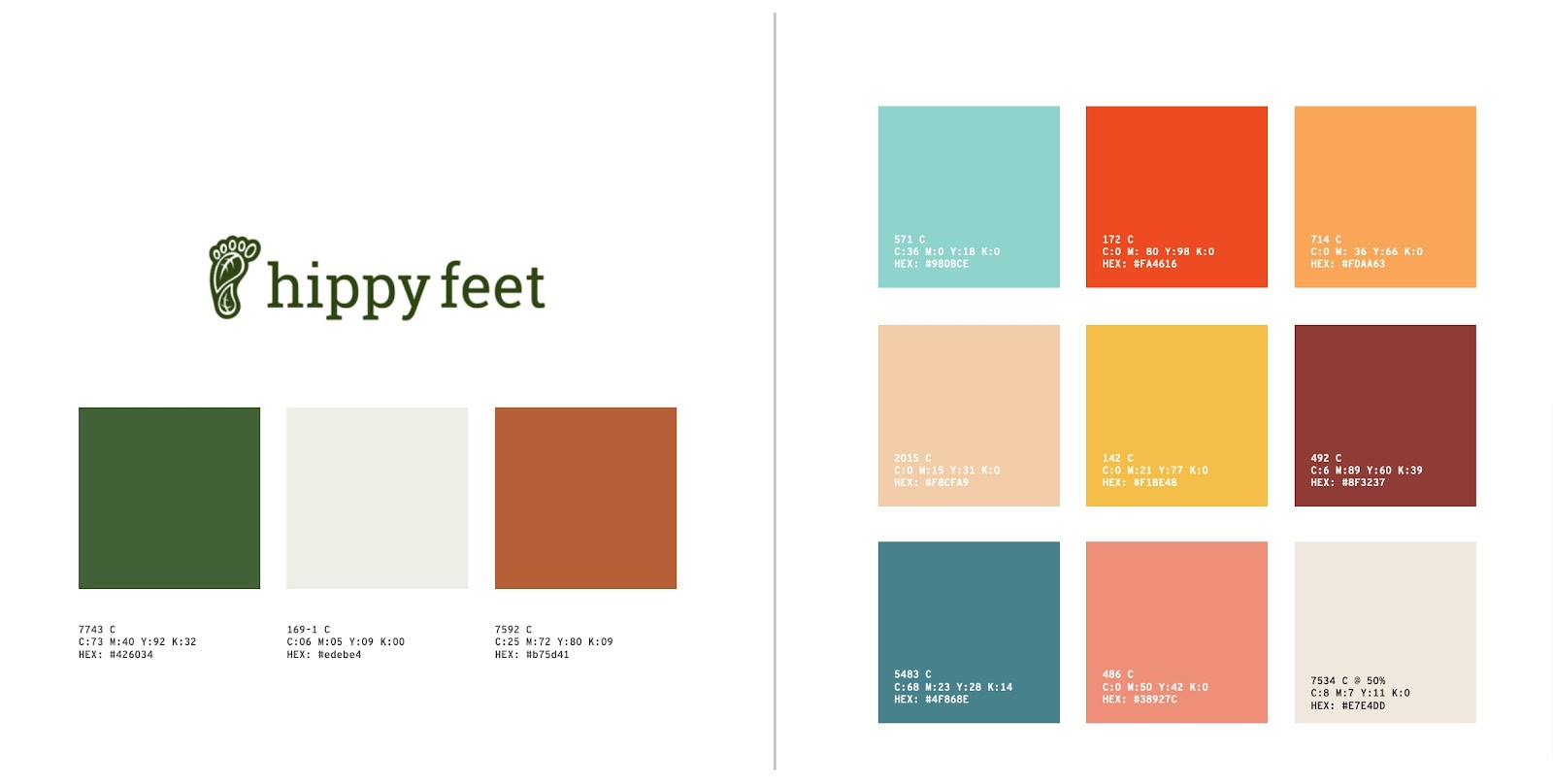
To stay consistent with the brand identity you’ve laid out, you need to create a guide that documents these decisions—from color palette and typography to brand copy and even a mood board (as Hippy Feet employs).
Once you’ve created your style guide, you can refer to it to inform marketing campaigns, special landing pages, and new advertising.
You can always change it as your brand evolves.
5. Price your jewelry
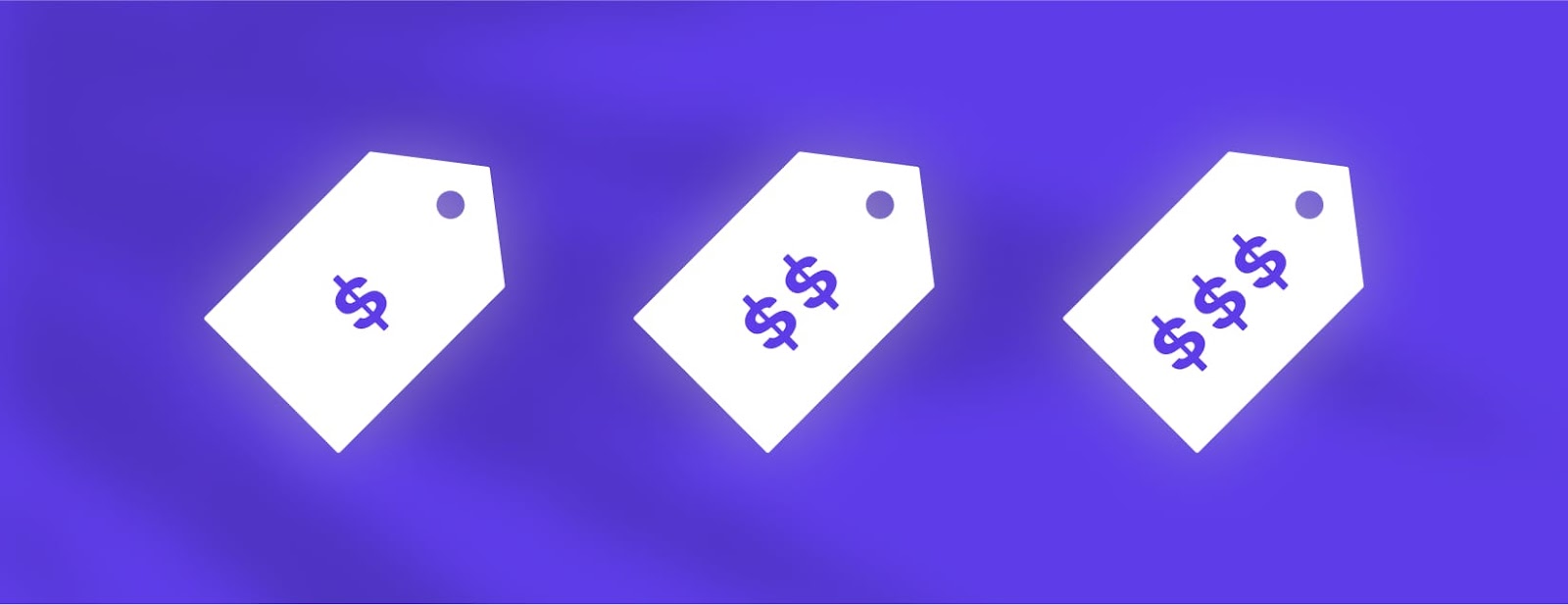
While building your brand and designing products is fun, the main idea of your venture is to come away with some cash. That’s where pricing comes in.
It doesn’t happen by throwing darts at a wall, no matter how much you wish it could.
Pricing is strategic. If you go too low, your brand and products could be considered cheap. If you go too high, your shoppers will flee for the next best-looking competitor.
It’s a balancing act and one which you need to consistently tweak to stay competitive and solvent.
There are a few main factors that will help you determine your pricing:
- Market pricing in your niche
- How unique your offering is
- The perceived value of your jewelry
- Your cost of goods sold (COGS)
In its simplest form, pricing is how much your product costs you plus how much percentage you want to make on top of that. But nothing is actually simple with pricing.
What I just described is called markup pricing, which takes into account your COGS plus your operating expenses and adds a margin on top of that.
But, if that number comes out too high, your competitors will gladly take those lost customers.
Which brings us to competitive pricing, which uses the pricing of similar brands as a baseline to find the pricing and margin that works best for your brand.
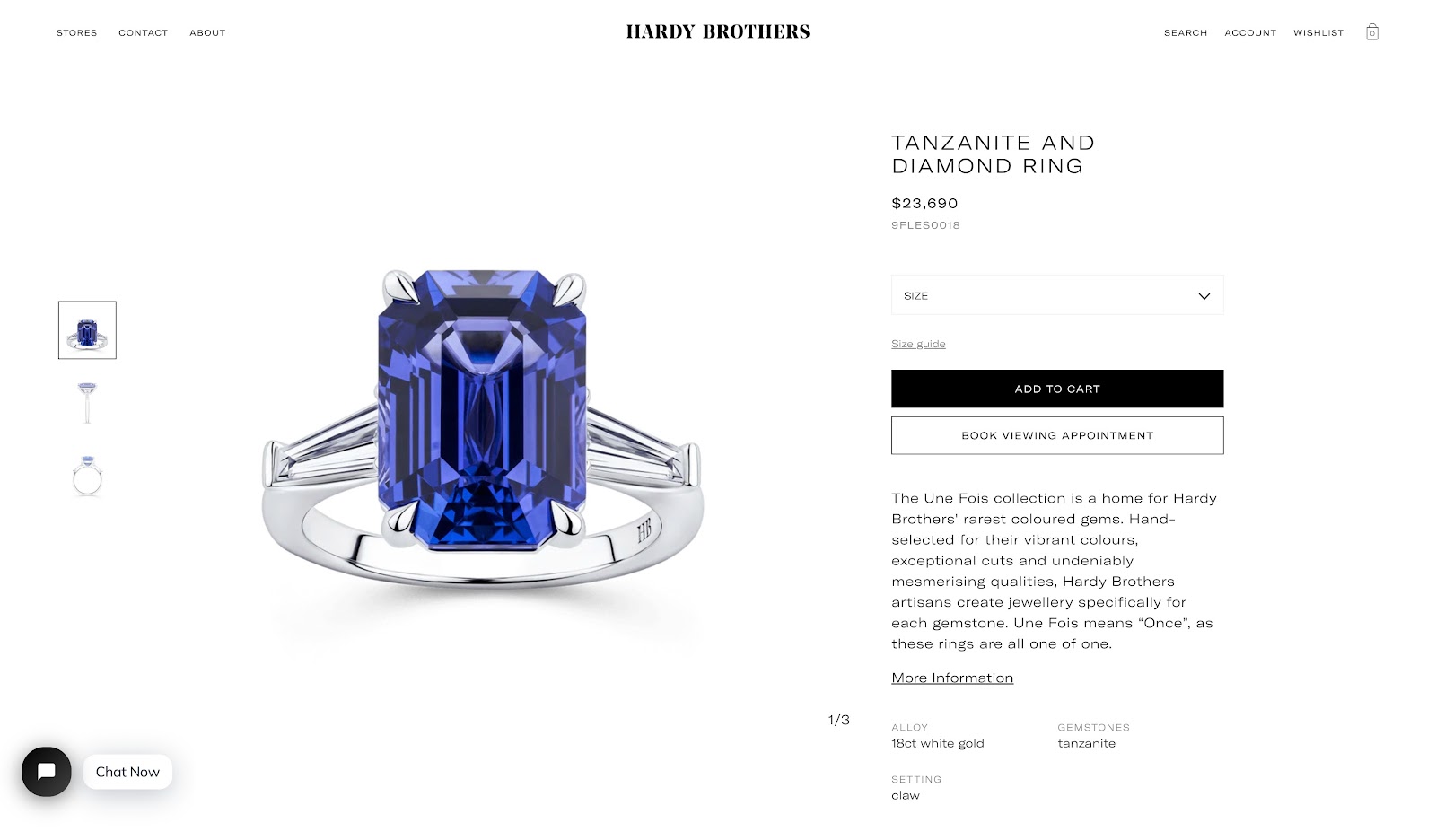
Fine jewelry purveyors and brands that have gained luxury status are able to unlock another level of pricing strategy called value-based pricing or luxury pricing.
For these brands, their pricing is more reflective of their status than their actual material and labor costs.
This is something that you can strive to achieve with your jewelry brand.
The final pricing strategy you can employ, in conjunction with other strategies, is discount pricing. Simple enough, this is all about running sales at strategic times to encourage increased sales and inventory clearout.
#cta-visual-pb-bes#<cta-title>Make your next store promotion convert!<cta-title>Learn how to build persuasive special offer pages from the brands who’ve perfected them.Download the ebook
6. Customize your store and launch
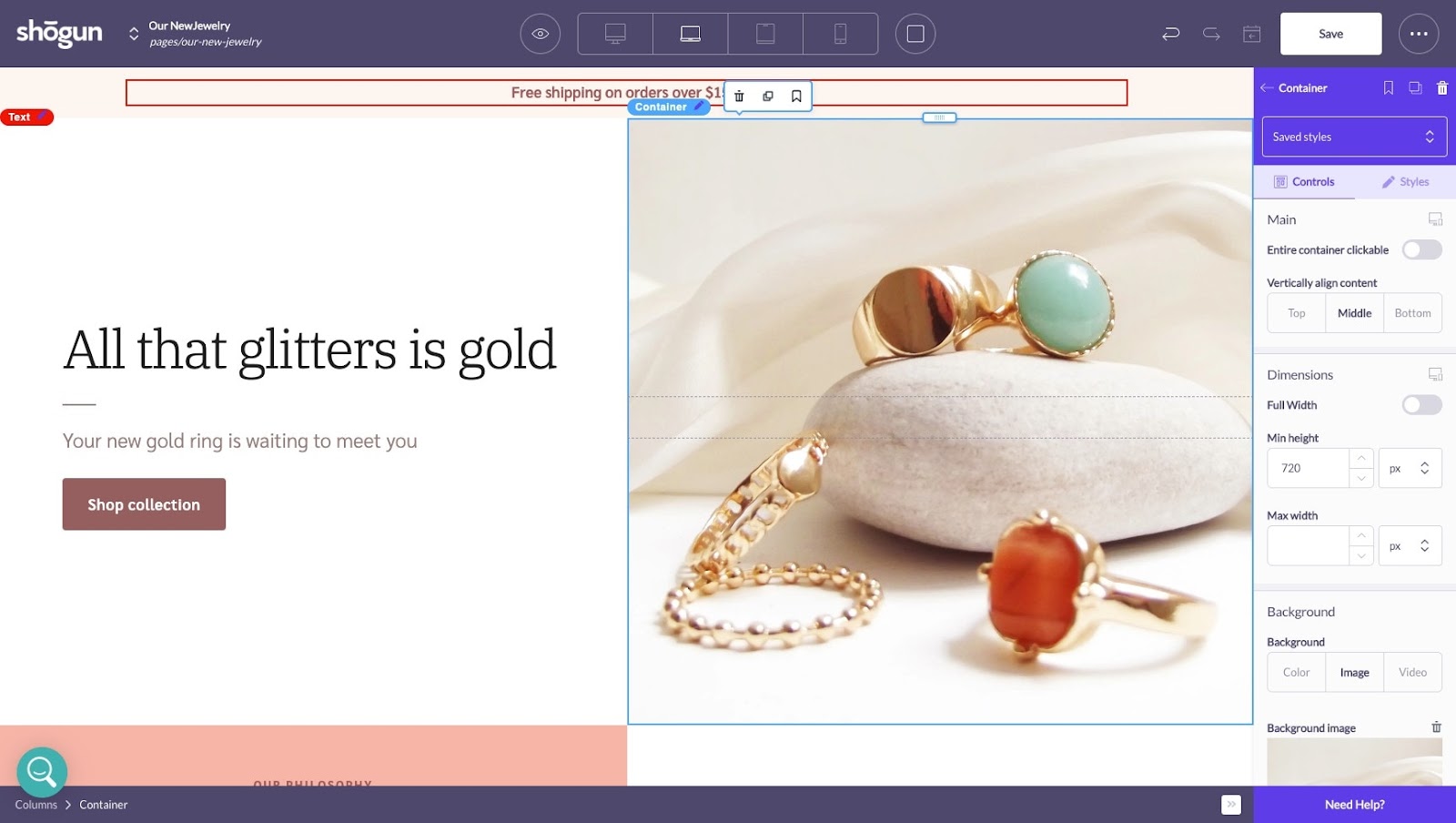
Now you are getting close to having a full-fledged jewelry store. Great work!
An essential part of starting your online jewelry shop is customizing it to fit your (well-documented) brand identity.
How you go about this will depend on the platform you chose for your store.
If you went with WooCommerce or Adobe Commerce, you’ll need to communicate your design vision to a team of web developers and designers that’ll make it real.
Ultimately, you’ll end up with what you want, though it’ll take some time and money to get there.
For those that chose BigCommerce or Shopify, the path to a beautiful on-brand storefront is simpler.
Both platforms come with great-looking paid and free themes that can get you closer to your brand vision. To make that easier, we rounded up the best Shopify themes and the top free BigCommerce themes.
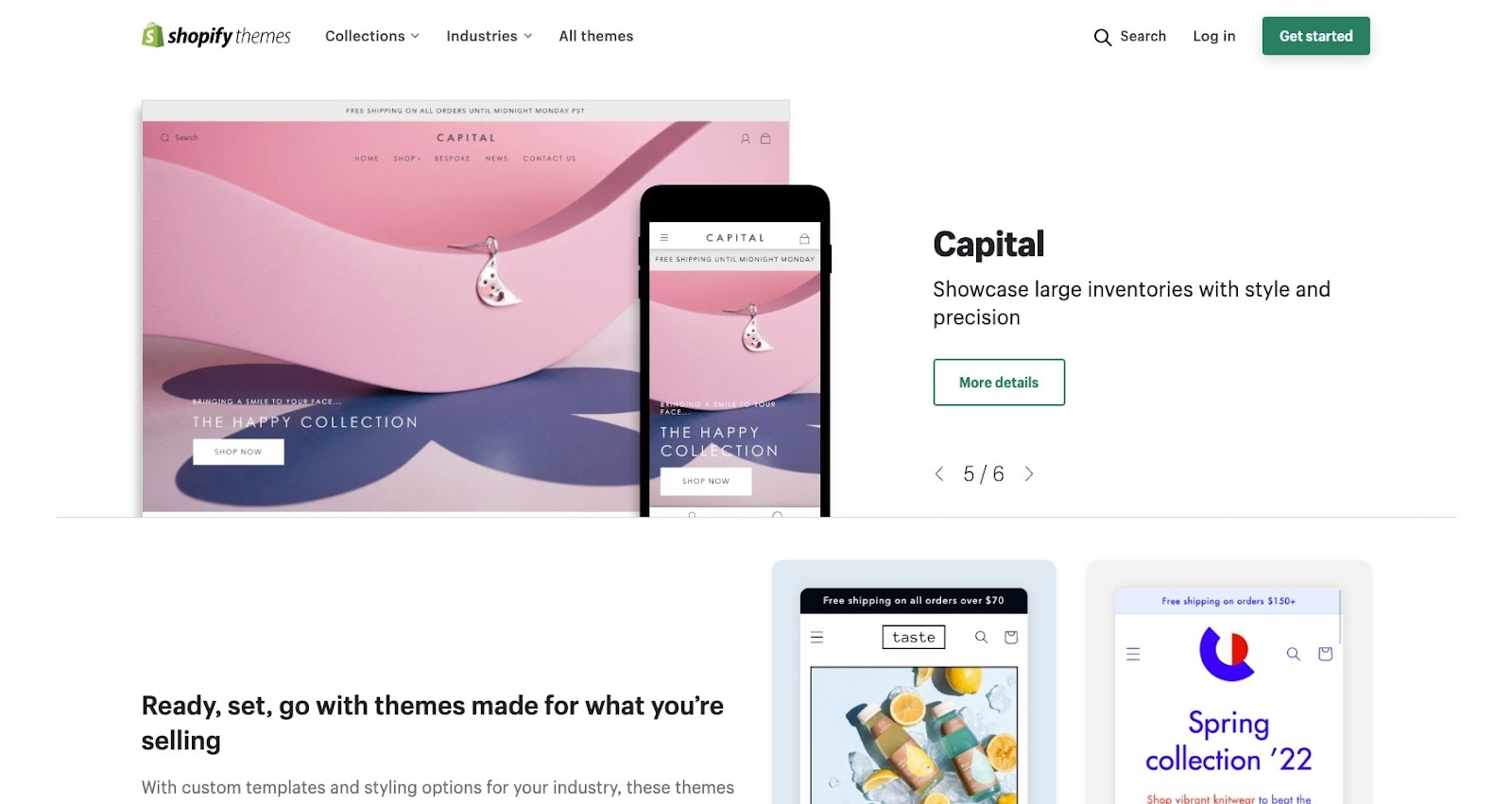
Choose your theme not only by looks but also by its inherent functionality. Certain themes have extra capabilities like sidebar navigation, cross-selling features, and blogging functionality.
While many themes are fairly good on their own, they may not be unique enough to set you apart from your competitors. So, you choose a theme that gets you as close as possible to your vision and find a solution that allows for easy customization.
That’s where Shogun Page Builder comes in.
Shopify and BigCommerce stores can add Page Builder to their app repertoire quickly and easily to start customizing their pages without messing with code.
With more than 30 page elements and 70+ readymade templates, you can start building your most essential store pages in a way that drives shoppers to convert.
To begin with, you’ll want to build a few vital pages:
- Homepage. Your most visited page, your homepage, will introduce your brand and products to new customers. Make sure to center your products.
- About Us page. Customer trust is earned by telling your brand story and describing your mission and vision. If they feel like they know you, they can begin a relationship with you.
- Contact page. If people can’t get in touch with you, their estimation of your brand will take a hit. Make it easy for them to talk to your team, and loyalty will follow.
- FAQ page. Predicting the common questions your customers will have and answering them will keep them shopping and take the pressure off your customer service team.
- Product pages. The last persuasive pitch to get your shoppers to buy, product pages need to be built in a way that assures them they have chosen the right product.
- Collection pages. A key element of navigation is building product collections in a logical way that funnels shoppers from the homepage down to a particular product.
- Dedicated landing pages.Your most valuable precision tool for conversions, landing pages allow you to target specific subsets of shoppers and customers.
By thinking of the pages of your store as a sort of sales funnel representing the customer’s journey from discovery to consideration to purchase, you can customize them to make that journey exciting and frictionless.
One thing you must include throughout the customer journey is social proof, both in the form of user-generated content and customer reviews.
Let shoppers know they are in good company by adding these elements on homepages, product pages, and landing pages.
Super successful direct-to-consumer stores deeply understand how this works and customize their stores to great effect. By locking down their main store pages and quickly building high-converting landing pages as needed, their stores rake in the sales.
When your store is ready for prime time, it is time to launch that puppy.
#cta-visual-pb-ee#<cta-title>See 25 Gorgeous Custom Landing Pages<cta-title>Get inspired by jaw-dropping custom Shopify landing pages from incredible brands.Download the ebook
7. Market your brand new business
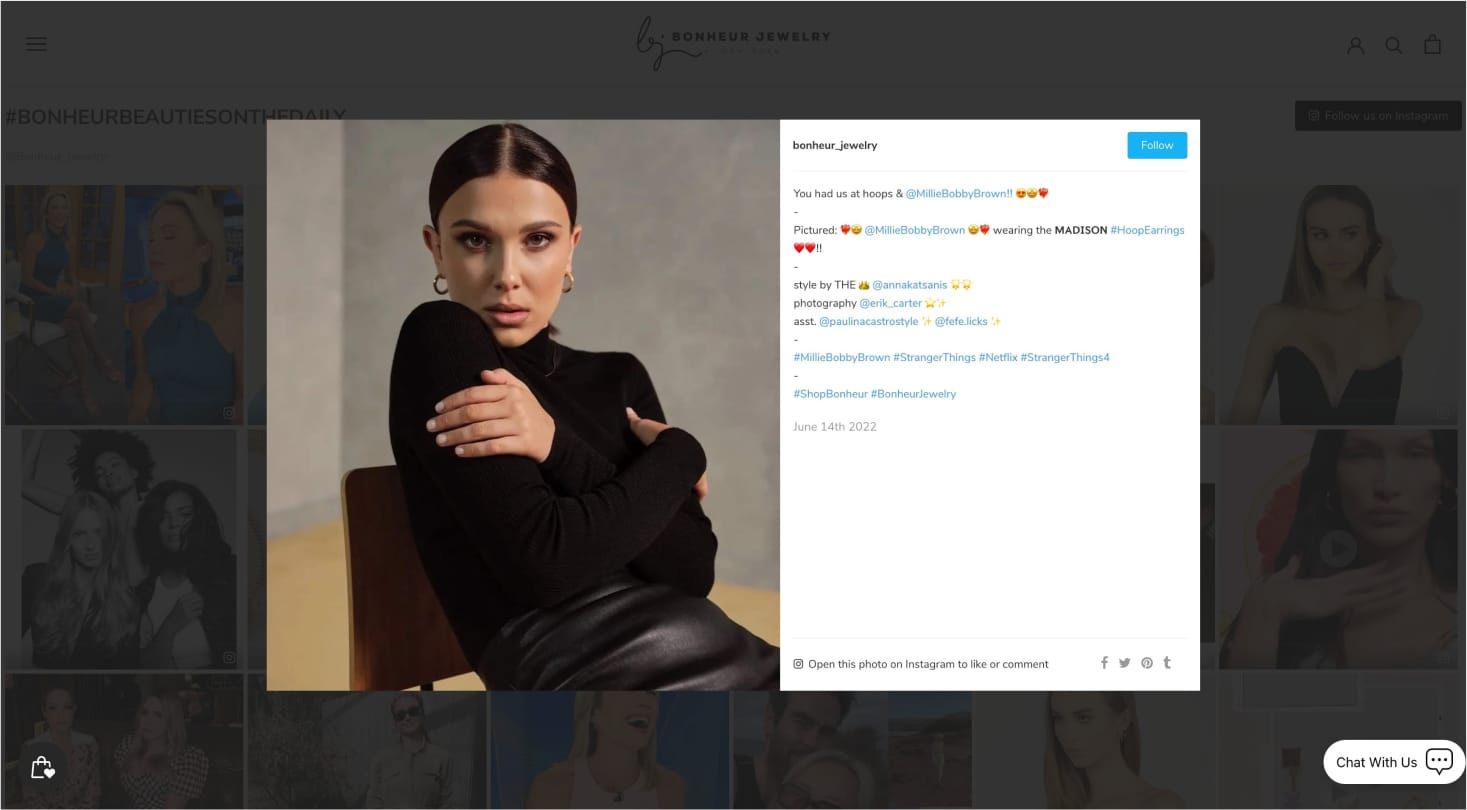
Finally, it comes down to letting the world know you exist and why they should pay attention.
You don’t even have to wait for your site to launch to begin marketing.
While you work on your store pages in the background, you can have a Coming Soon splash page that heralds your upcoming entry into the world and starts building your email list of potential customers.
Once you launch, you can use many marketing strategies to get your jewelry line in front of the right eyeballs.
1. Paid advertising. The most direct way to get in front of the right audience comes in a few forms:
- Search ads: Looking like regular Google search results (mostly), these keyword-targeted ads appear at the top and bottom of each search page.
- Shopping ads: Google Shopping uses your product feed and images to create product-centric ads that can show up all over Google properties, sending people straight to product pages.
- Display ads: These visual ads showcase your products and brand across millions of websites, determined by your target audience and the sites they’d visit.
- Social media ads: Twitter, Instagram, Facebook, Pinterest, and more all use ads to stay free. Since they have so much user data, audiences can be targeted to the smallest detail.
- Retargeting ads: For those who have visited your site and didn’t buy, retargeting ads can follow them through the halls of the internet to keep you top of mind. You can use tracking pixels from Facebook, Google, and others to facilitate this.
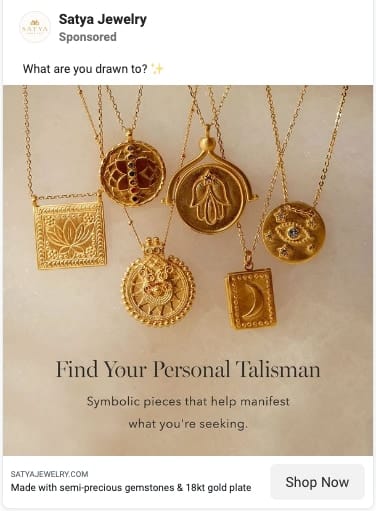
2. SEO. Free traffic is a breath of fresh air for marketers. While SEO marketing doesn’t give you immediate wins, the long-term gains are worth the effort. By utilizing smart content marketing, you can pop up for search terms that your target audience might use.
3. Social media. While this will undoubtedly begin with friends and family, you can do the work to grow your social media channels with great content that resonates with your target audience. Your social media posts (like Instagram) can feature the rich product photography you’ve taken and eventually include powerful user-generated content from your growing base of loyal customers.
4. Email marketing. Once you’ve built up an email list—whether from the form on your pre-launch page, newsletter signups, or first-time customers—you can nurture those relationships with powerful drip campaigns that fit their stage of the sales journey.
To make any of these channels work effectively for your brand, you need to know your ideal customers. The easiest way to distill this information is into buyer personas.

A good buyer persona will consider demographics (age, gender, ethnicity, etc), behavior (hobbies, home life, social media, content types), and pain points/goals (what are they struggling with, and how would a product solve that).
Knowing who you are talking to will make your marketing materials (copy, imagery, CTAs) hit precisely the right tone.
And, for more targeted channels like paid advertising and email marketing, having these details at hand is an absolute must. With super-targeted ad platforms like Facebook and Instagram, your persona will inform to who your ads will be shown.
You can take all the resulting traffic from these channels and drive it to particular pages that best serve the shopper’s intent.
Once you are done, you’ll want to stay vigilant and update your store to accommodate sales promos, new seasons, changing customer interests, and what converts best.
Regular A/B testing will keep your most important pages optimized for conversions.
Take the steps to start selling your shiny things
After completing these steps, you should have a fresh and fancy jewelry store to show for it.
Every business has its own unique challenges and quirks, but by doing the work to fully understand the industry and your target market, you should be able to find success.
Unlike brick-and-mortar shops, your online jewelry store can quickly pivot as the market changes.
Once your online shop is launched, you’ll be able to adapt your marketing strategy and store design to serve your customers’ needs. We can’t wait to see what you start selling!
#cta-visual-pb#<cta-title>Create a truly custom store for your jewelry<cta-title>You can build the store your product deserves with Shogun Page Builder, allowing you to be agile with customizations as the need arises.Start building for free

Sean Flannigan
Sean is one of Shogun's tireless content marketers. When he isn't creating exciting ecommerce content, he's probably biking or at the park.



